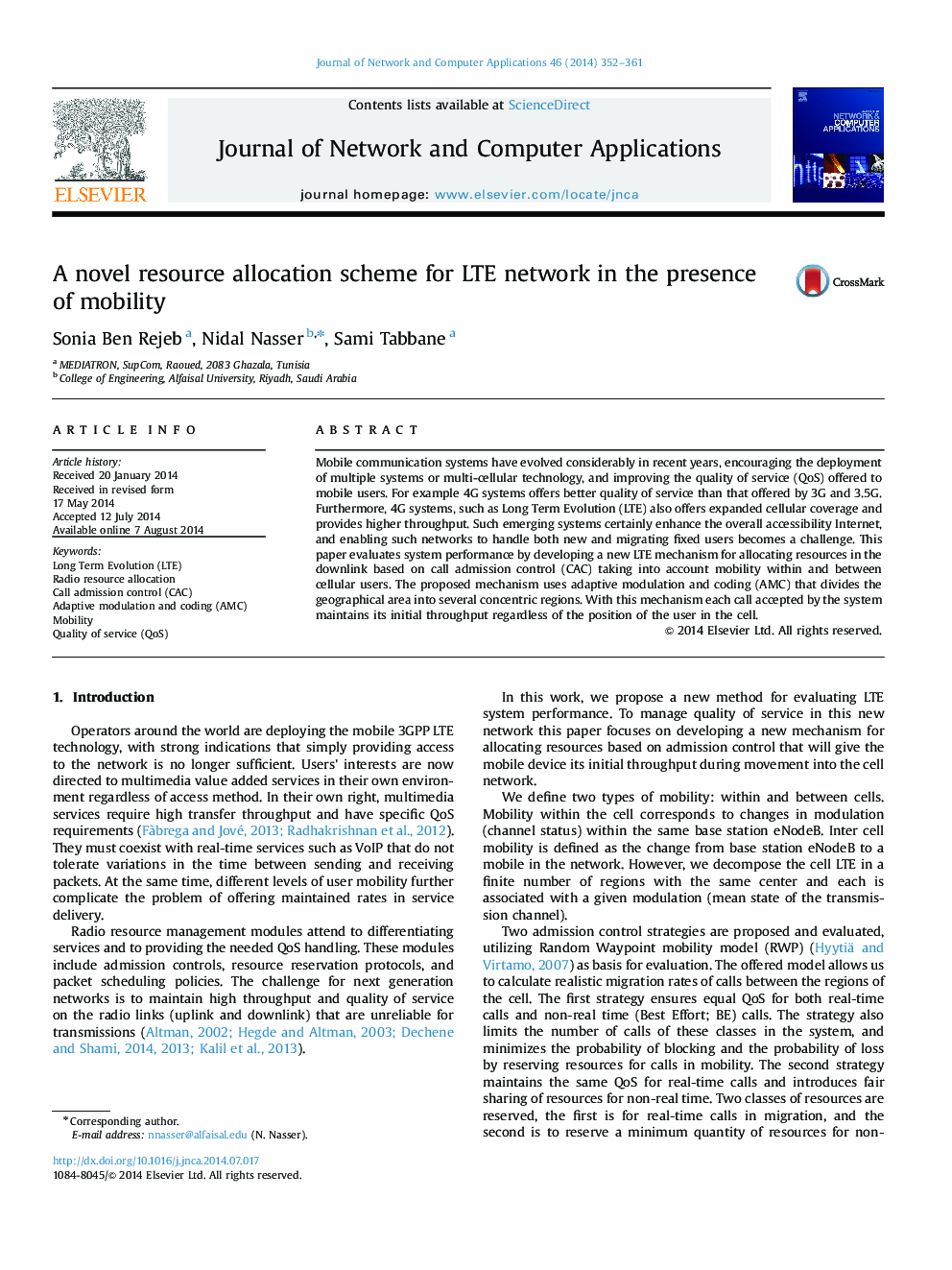| Article ID | Journal | Published Year | Pages | File Type |
|---|---|---|---|---|
| 457304 | Journal of Network and Computer Applications | 2014 | 10 Pages |
Mobile communication systems have evolved considerably in recent years, encouraging the deployment of multiple systems or multi-cellular technology, and improving the quality of service (QoS) offered to mobile users. For example 4G systems offers better quality of service than that offered by 3G and 3.5G. Furthermore, 4G systems, such as Long Term Evolution (LTE) also offers expanded cellular coverage and provides higher throughput. Such emerging systems certainly enhance the overall accessibility Internet, and enabling such networks to handle both new and migrating fixed users becomes a challenge. This paper evaluates system performance by developing a new LTE mechanism for allocating resources in the downlink based on call admission control (CAC) taking into account mobility within and between cellular users. The proposed mechanism uses adaptive modulation and coding (AMC) that divides the geographical area into several concentric regions. With this mechanism each call accepted by the system maintains its initial throughput regardless of the position of the user in the cell.
